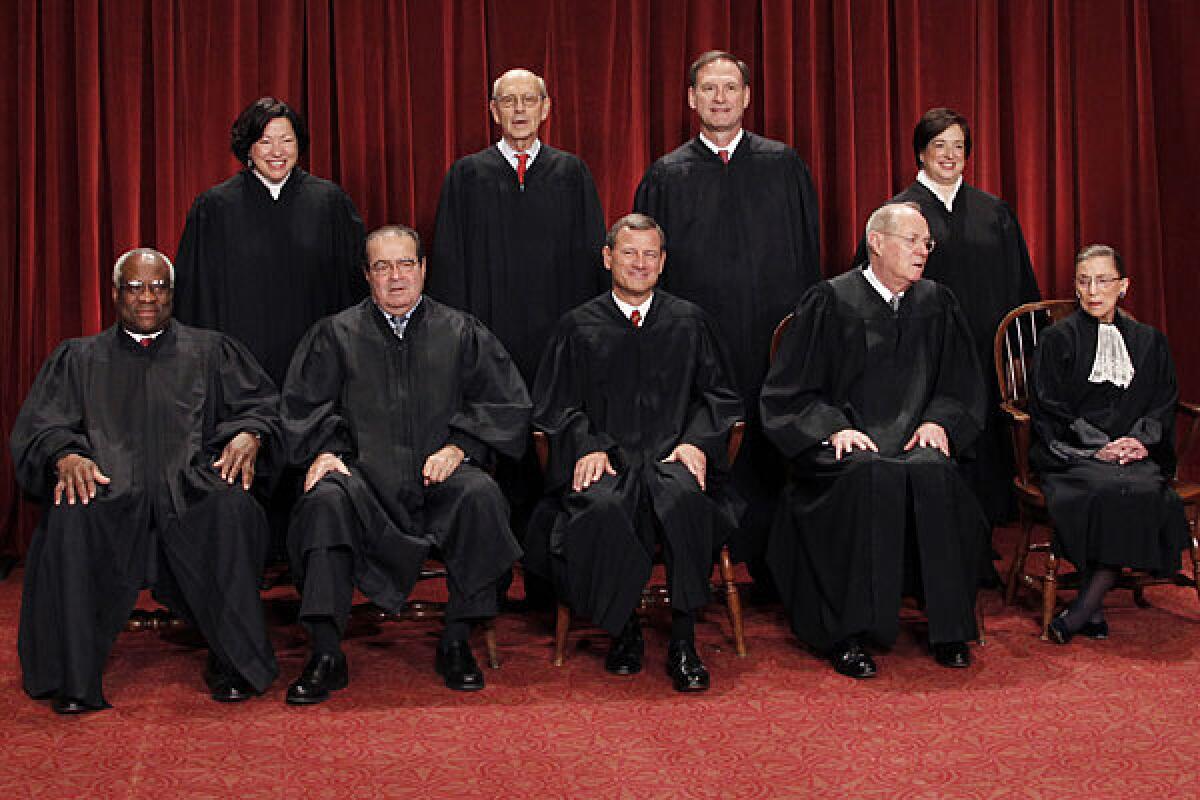Supreme Court considers who should pay damages to child-porn victim

WASHINGTON — A Pennsylvania girl known in court papers only as Amy was sexually abused by an uncle when she was 8. He went to prison, but not before circulating pictures of the rape on the Internet.
Fifteen years after the abuse, law enforcement investigators have found more than 70,000 images of Amy’s assault on computers seized around the world. One was a laptop owned by Doyle Paroline, a Texas man who pleaded guilty to downloading child pornography and was sentenced to two years in prison.
On Wednesday, the Supreme Court was asked to decide whether the Crime Victims’ Rights Act of 2004 should allow Amy, now in her mid-20s, to collect from Paroline $3.4 million in damages — the amount she estimates she needs to compensate for the psychological injuries that arose from her abuse.
The law includes a provision for mandatory restitution for victims of sexual violence, allowing them to seek compensation in federal child-pornography cases in which their images are identified.
Amy, who said in a 2008 victim impact statement that knowing images of her abuse continued to circulate widely was like “being abused over and over and over again,” has filed more 250 restitution requests with federal judges nationwide. She won awards from some judges totaling $1.7 million, and nothing from others, who said they were unable to connect the harm she endured directly to the defendant’s possession of the images.
But in 2012, a panel of judges in Texas decided that a single defendant — Paroline — was liable for the entire $3.4 million. They noted that the law says judges “shall order restitution for any offense” involving child sex abuse, and that Paroline had pleaded guilty to such an offense.
The Supreme Court took up Paroline’s case to decide whether he should pay all of that amount, none of it, or something in between.
His attorney said he should pay nothing because he merely possessed two illegal images of Amy and did not directly abuse her. The law says the “the victim’s losses must be proximally caused by a defendant’s conduct” before he can be ordered to pay restitution, said Stanley Schneider, a Houston lawyer.
That option won few takers. Justice Antonin Scalia, who called Paroline “a bad guy,” said Amy had “undergone serious psychiatric harm because of her knowledge that there are thousands of people out there viewing her rape,” and asked, “Why isn’t your client at least responsible for some of that?”
Paul G. Cassell, a former federal judge from Utah, argued on behalf of Amy and said the Texas man — or anyone who possesses the illegal images — should be assessed the full cost. Congress passed a law that “promises Amy she will receive restitution for all of her losses.” So the right amount “is the full amount,” he said.
“Why?” Justice Stephen G. Breyer asked. “The person here didn’t cause the full amount.”
Cassell insisted Paroline was a “contributing cause to all of Amy’s losses. [They] come from a vast, faceless, anonymous crowd of thousands of people scattered around the globe from Denver to Denmark who are looking at pictures of her being raped as an 8-year-old.”
He dismissed he idea of apportioning the damages in a way that would require her to seek restitution for smaller amounts from the thousands of people who downloaded the images. However, justices seemed uncomfortable with putting the entire amount on one defendant.
“You are not claiming — or are you? — that she’s been victimized to the tune of $3.4 million as a result of this particular defendant’s offense?” Justice Elena Kagan asked.
Cassell insisted that because Paroline contributed to her suffering, he could be forced to pay the full amount.
A Justice Department lawyer proposed a middle position that would allow trial judges to decide on a case-by-case basis how much each defendant would be required to pay. That option also left the justices unsatisfied because it was not clear how the judges would decide.
The law entitles victims to full compensation, but not more than that, said Jeff Dion, deputy director of the National Center for Victims of Crime. “Once she is paid in full, the restitution stops,” he said.
Twitter: @davidgsavage
More to Read
Start your day right
Sign up for Essential California for news, features and recommendations from the L.A. Times and beyond in your inbox six days a week.
You may occasionally receive promotional content from the Los Angeles Times.







